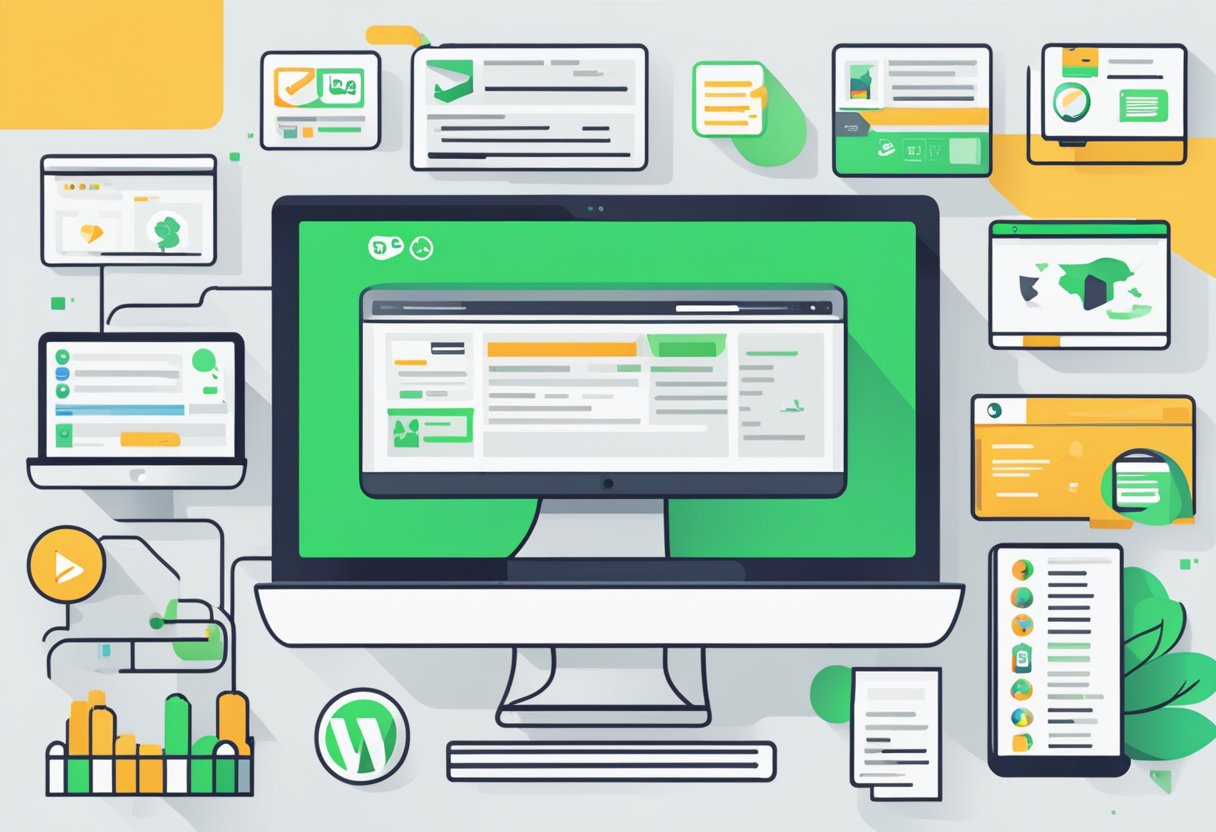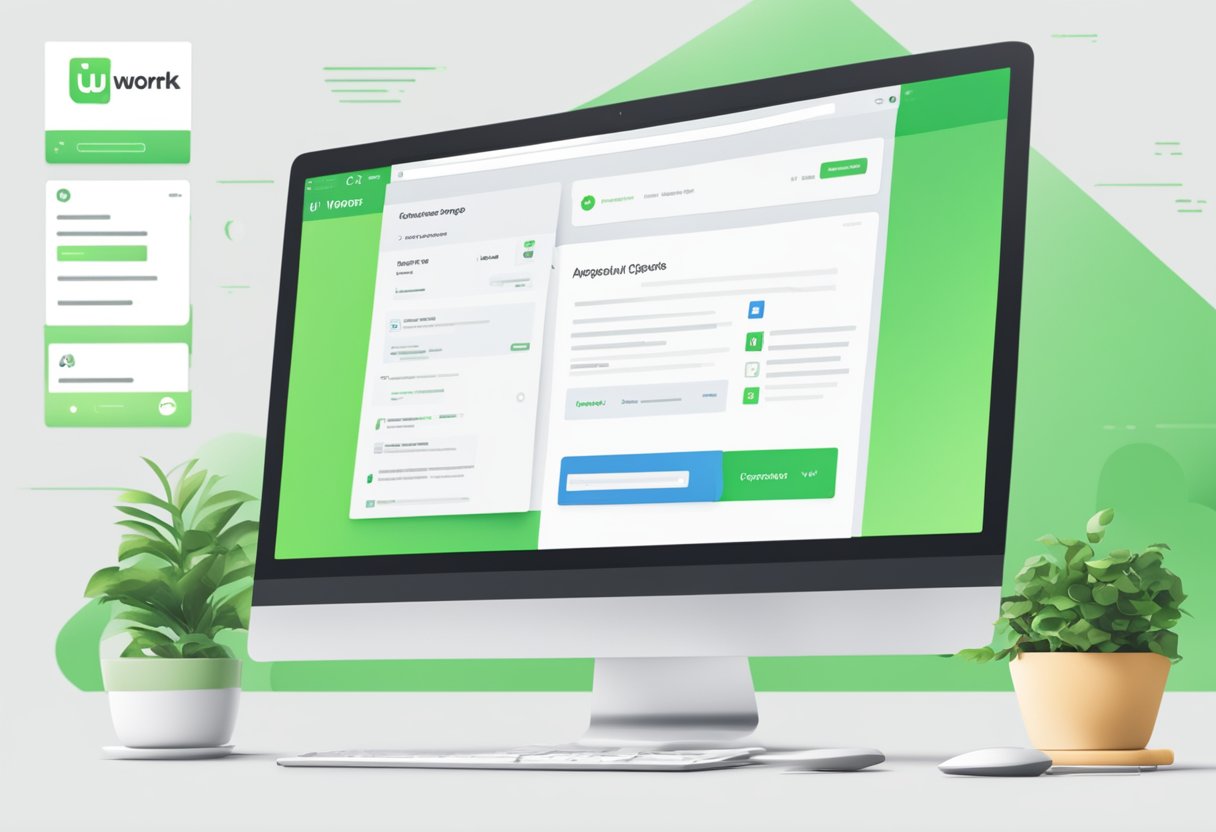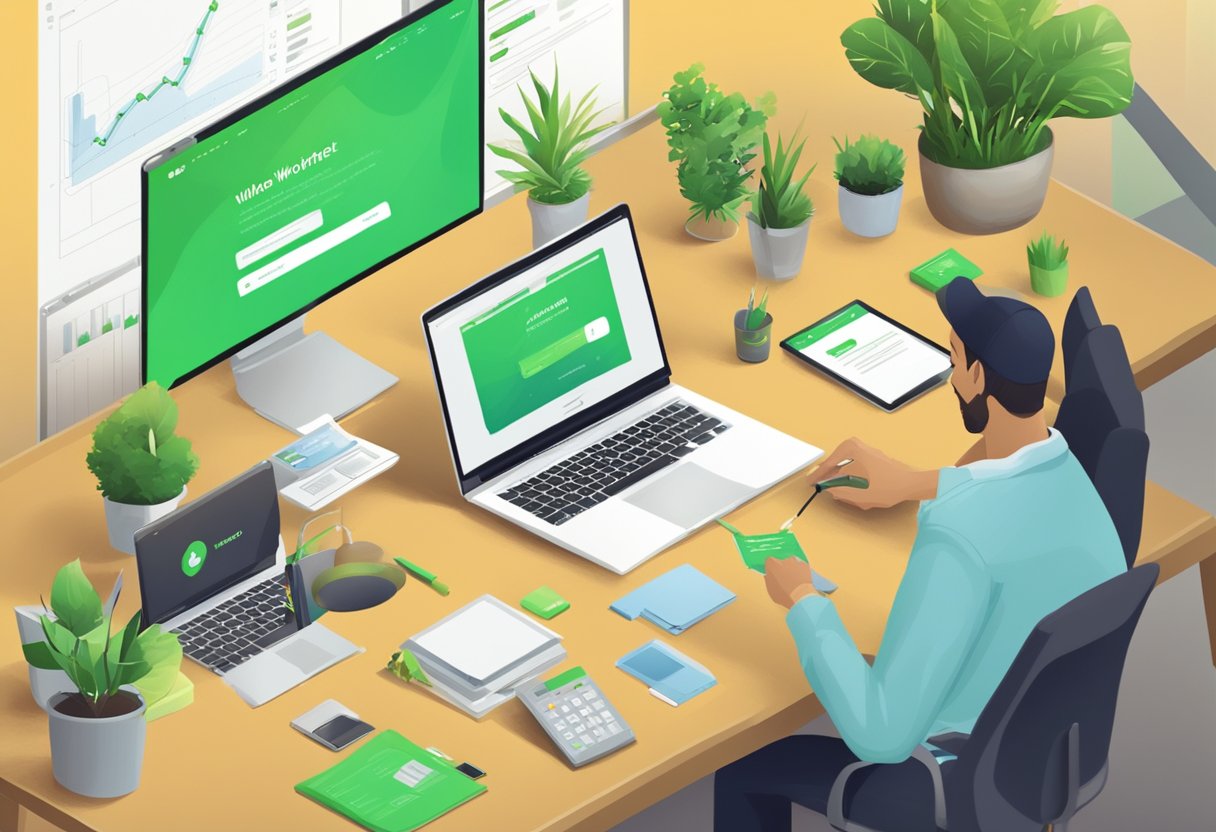Upwork is a popular freelancing platform that connects businesses with skilled professionals from all over the world. The platform offers a wide range of services including website design, development, and maintenance. With over 12 million registered freelancers and five million registered clients, Upwork has become a go-to platform for businesses looking for quality website design services.

One of the main advantages of using Upwork for website design is the platform’s ability to connect businesses with talented professionals from all over the world. This means that businesses can access a larger pool of designers and developers who have diverse skills and expertise. Upwork also offers a transparent and secure payment system that ensures that businesses only pay for work that meets their standards and expectations. Additionally, Upwork provides tools and resources that help businesses manage their projects and communicate effectively with their freelancers.
Índice De Conteúdo
Understanding Upwork Website Design

The Role of Freelance Designers
Upwork is a platform that connects businesses with freelance designers to help them create stunning websites. Freelance designers play a crucial role in the website design process on Upwork. They bring their expertise and creativity to the table and work closely with clients to ensure that the final product meets their needs and expectations.
One of the benefits of working with freelance designers on Upwork is the ability to choose from a vast pool of talent. Clients can browse through designer profiles, portfolios, and reviews to find the right match for their project. This ensures that clients get the best possible outcome for their website design needs.
Design Process and Milestones
The website design process on Upwork typically involves several milestones, including discovery, wireframing, design, development, and launch. Each milestone is critical to ensuring that the final product meets the client’s needs and expectations.
During the discovery phase, the designer works closely with the client to understand their business, target audience, and goals for the website. This information is used to create a wireframe, which is a visual representation of the website’s layout and functionality.
Once the wireframe is approved, the designer moves on to the design phase, where they create the visual elements of the website, such as the color scheme, typography, and imagery. The client provides feedback throughout the design process, ensuring that the final product meets their expectations.
After the design is complete, the website is developed, and the final product is launched. The designer provides ongoing support to ensure that the website remains functional and up-to-date.
In conclusion, Upwork is an excellent platform for businesses looking to create stunning websites. Freelance designers play a crucial role in the website design process, bringing their expertise and creativity to the table to ensure that the final product meets the client’s needs and expectations. With a structured design process and clear milestones, clients can rest assured that their website will be delivered on time and to their satisfaction.
Creating a Successful Brief

When starting a project on Upwork, creating a successful brief is crucial to ensure that the project runs smoothly and meets the client’s expectations. A good brief should include a clear definition of the project scope and set clear objectives for the freelancer to achieve.
Defining Project Scope
Defining the project scope is the first step in creating a successful brief. This involves clearly outlining what the project is about, what the deliverables are, and what the freelancer is expected to do. A good way to define the project scope is to create a list of requirements, which can be broken down into smaller, more manageable tasks.
One way to ensure that the project scope is well-defined is to have a brainstorming session with the client and the freelancer. This will allow everyone to discuss the project in detail and identify any potential issues or challenges that may arise.
Setting Clear Objectives
Setting clear objectives is the second step in creating a successful brief. Objectives should be specific, measurable, achievable, relevant, and time-bound (SMART). This will help the freelancer understand exactly what is expected of them and ensure that the project is completed on time and to a high standard.
It is also important to set realistic deadlines for each objective. This will help the freelancer to manage their time effectively and ensure that they are able to deliver the project on time.
In summary, creating a successful brief on Upwork involves defining the project scope and setting clear objectives. By doing this, the freelancer will have a clear understanding of what is expected of them and the project is more likely to be completed on time and to a high standard.
Finding the Right Designer
When it comes to designing a website, finding the right designer is crucial. Upwork offers a vast pool of talented and experienced designers from all over the world. Here are a few tips for finding the right designer for your website project.
Evaluating Portfolios
One of the best ways to assess a designer’s skills and expertise is to evaluate their portfolio. A portfolio showcases a designer’s previous work and gives you an idea of their design style and capabilities. When evaluating a designer’s portfolio, look for examples of websites that are similar to what you are looking for. Pay attention to the overall design aesthetic, the layout, and the functionality of the websites.
Assessing Client Feedback
Client feedback is another important factor to consider when evaluating a designer’s capabilities. Upwork provides a platform for clients to leave feedback on a designer’s profile. Take the time to read through the feedback and pay attention to any recurring themes. If a designer consistently receives positive feedback, it’s a good sign that they are reliable, communicative, and produce high-quality work.
Conducting Interviews
Before hiring a designer, it’s important to conduct an interview to get a sense of their communication style and work process. During the interview, ask questions about their experience, their design process, and their availability. Be sure to discuss your project requirements and ask for their input and suggestions. This will give you a sense of how they approach design challenges and whether they are a good fit for your project.
By evaluating portfolios, assessing client feedback, and conducting interviews, you can find the right designer for your website project on Upwork.
Effective Collaboration on Upwork

Communication Best Practices
Effective collaboration on Upwork requires clear and timely communication between clients and freelancers. To ensure smooth communication, it is recommended that clients and freelancers establish communication channels early on in the project, such as through Upwork’s messaging system or video conferencing tools.
Clients should clearly communicate project requirements and expectations, while freelancers should ask questions and seek clarification when needed. It is also important to establish a communication schedule and stick to it, to ensure that both parties are updated on the project’s progress.
Using Upwork Tools for Collaboration
Upwork offers a variety of tools to facilitate collaboration between clients and freelancers. One such tool is Upwork’s time tracking software, which allows clients to monitor freelancers’ work hours and ensure that they are being billed accurately.
Upwork also provides file sharing and collaboration tools, such as Google Drive and Dropbox integrations, which allow clients and freelancers to share files and collaborate on documents in real-time.
In addition, Upwork offers a project management tool that allows clients to set milestones and deadlines, assign tasks, and track project progress. This tool can help ensure that projects are completed on time and within budget.
By following these communication best practices and utilizing Upwork’s collaboration tools, clients and freelancers can effectively work together to complete successful projects.
Finalizing and Launching the Website

Testing and Revisions
Before launching the website, it is essential to test it thoroughly to ensure that it functions correctly and meets the requirements. The testing process involves checking the website’s functionality, usability, compatibility, and performance. It is crucial to test the website on different devices and browsers to ensure that it works well on all platforms.
Once the testing is complete, the designer should address any issues or bugs that were identified during the testing process. The designer should make the necessary revisions to the website to ensure that it meets the client’s requirements and functions correctly.
Launching Strategies
After the website has been finalized, it is time to launch it. There are several strategies that designers can use to launch a website successfully. One of the most effective strategies is to create a launch plan that outlines the steps that need to be taken before and after the launch.
The launch plan should include a timeline for the launch, including all the activities that need to be completed before the launch. It should also include a list of the launch channels that will be used to promote the website, such as social media, email marketing, and paid advertising.
Another effective strategy is to create a buzz around the launch. Designers can create a teaser campaign that provides a sneak peek of the website and generates interest among the target audience. This can be done through social media, email marketing, or other promotional channels.
In conclusion, finalizing and launching a website requires careful planning and execution. Designers should test the website thoroughly and make the necessary revisions before launching it. They should also use effective launch strategies to promote the website and generate interest among the target audience.

